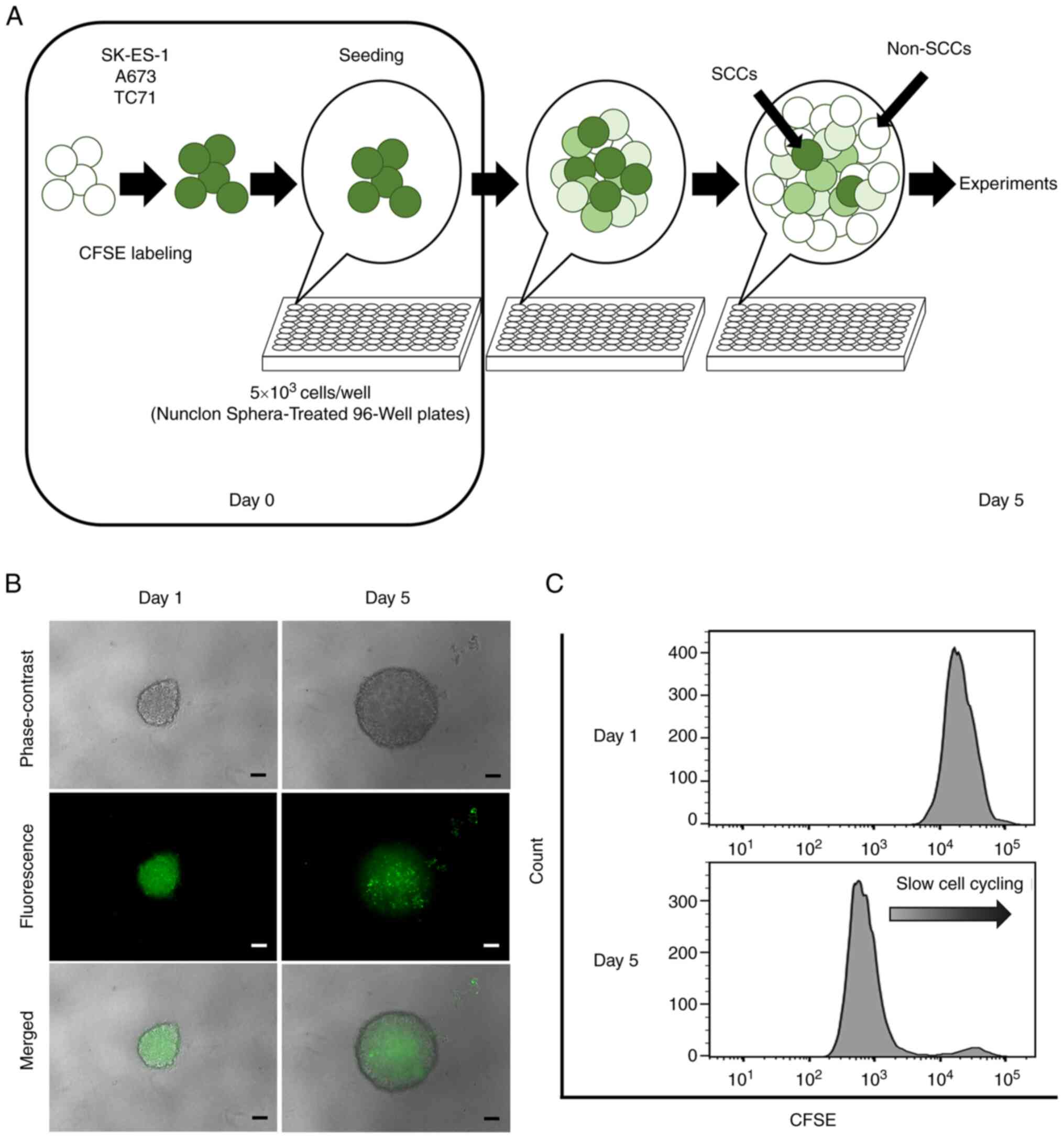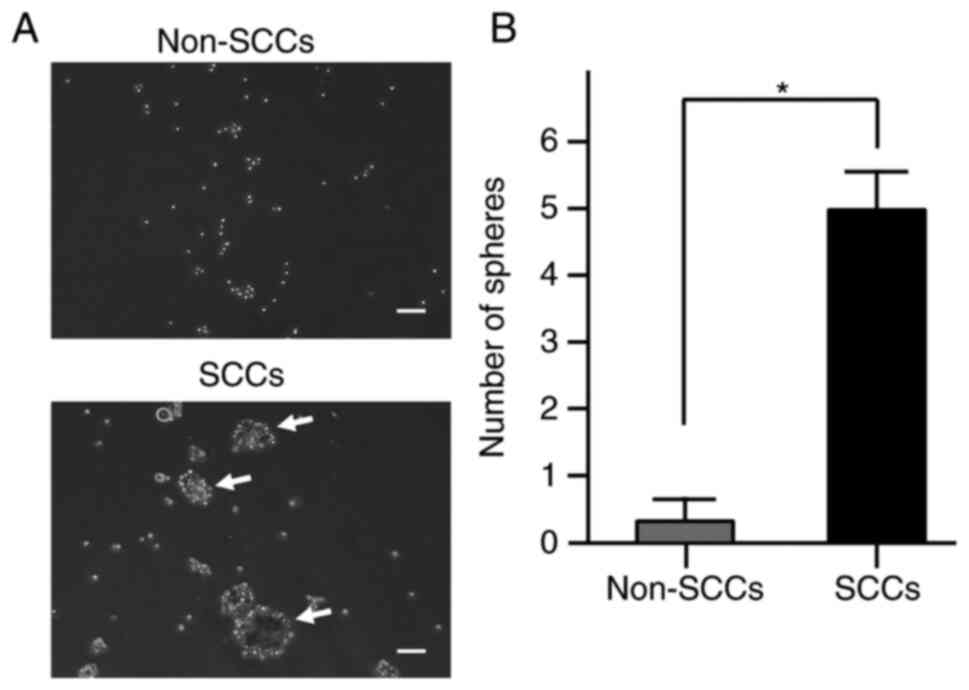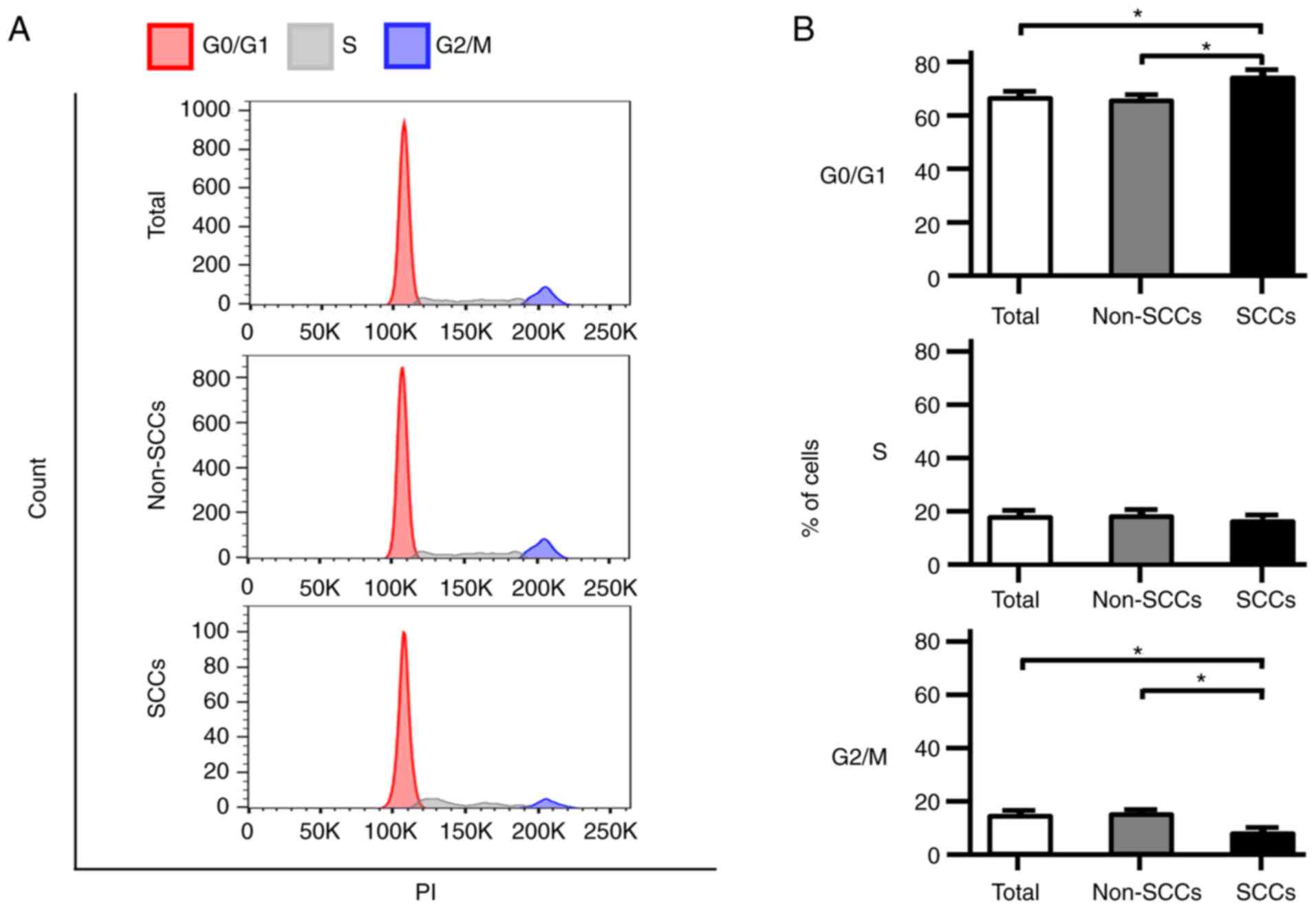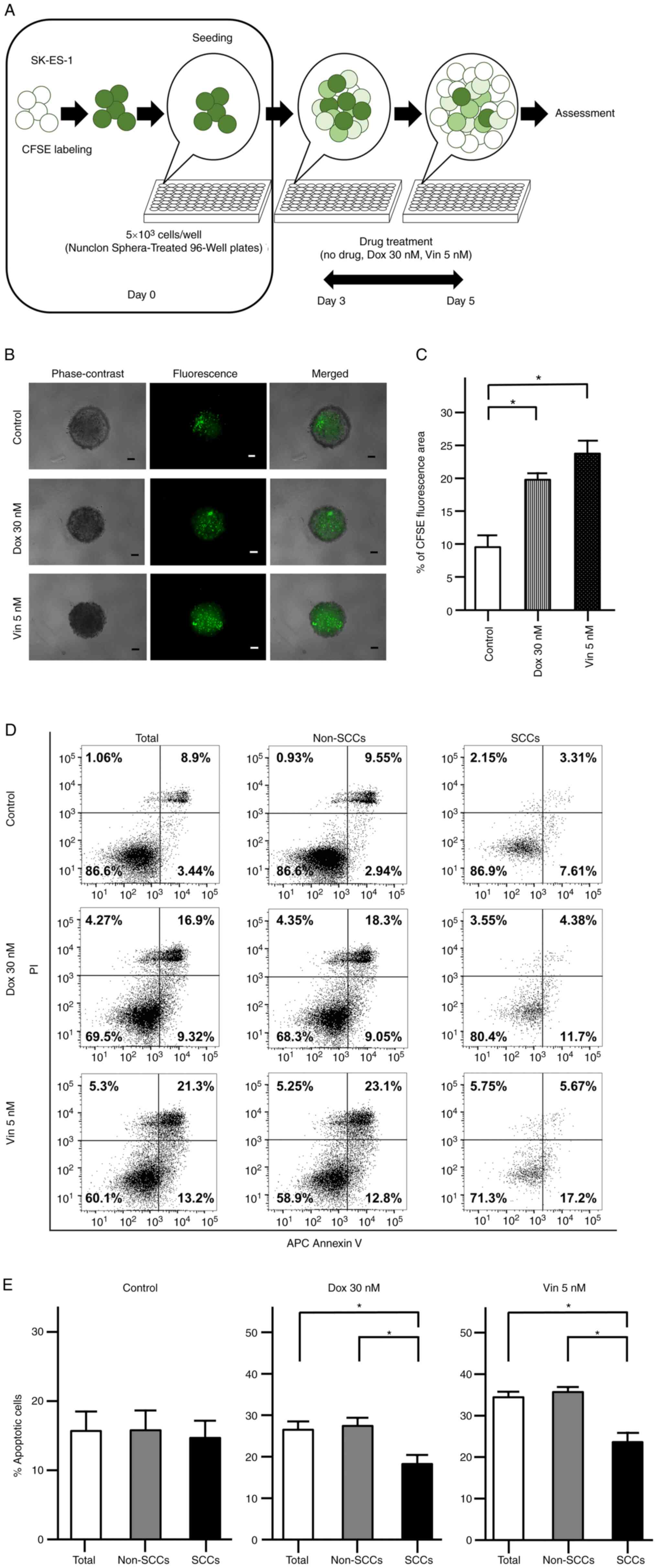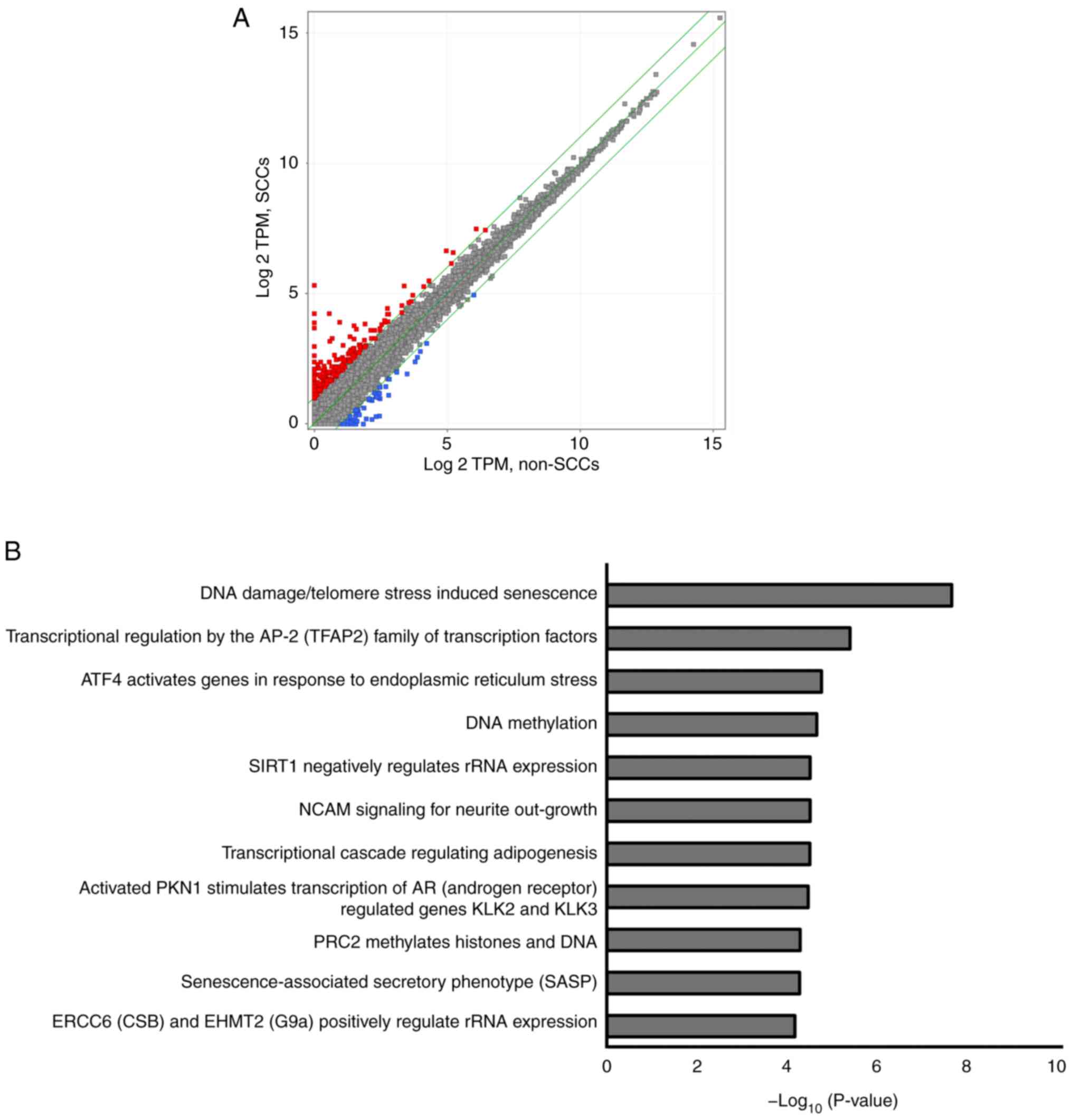|
1
|
Balamuth NJ and Womer RB: Ewing's sarcoma.
Lancet Oncol. 11:184–192. 2010. View Article : Google Scholar : PubMed/NCBI
|
|
2
|
Damron TA, Ward WG and Stewart A:
Osteosarcoma, chondrosarcoma, and Ewing's sarcoma: National cancer
data base report. Clin Orthop Relat Res. 459:40–47. 2007.
View Article : Google Scholar : PubMed/NCBI
|
|
3
|
Potratz J, Dirksen U, Jürgens H and Craft
A: Ewing sarcoma: Clinical state-of-the-art. Pediatr Hematol Oncol.
29:1–11. 2012. View Article : Google Scholar : PubMed/NCBI
|
|
4
|
Gaspar N, Hawkins DS, Dirksen U, Lewis IJ,
Ferrari S, Le Deley MC, Kovar H, Grimer R, Whelan J, Claude L, et
al: Ewing sarcoma: Current management and future approaches through
collaboration. J Clin Oncol. 33:3036–3046. 2015. View Article : Google Scholar : PubMed/NCBI
|
|
5
|
Rodríguez-Galindo C, Liu T, Krasin MJ, Wu
J, Billups CA, Daw NC, Spunt SL, Rao BN, Santana VM and Navid F:
Analysis of prognostic factors in Ewing sarcoma family of tumors:
Review of St. Jude children's research hospital studies. Cancer.
110:375–384. 2007. View Article : Google Scholar : PubMed/NCBI
|
|
6
|
Paulussen M, Ahrens S, Dunst J, Winkelmann
W, Exner GU, Kotz R, Amann G, Dockhorn-Dworniczak B, Harms D,
Müller-Weihrich S, et al: Localized Ewing tumor of bone: Final
results of the cooperative Ewing's sarcoma study CESS 86. J Clin
Oncol. 19:1818–1829. 2001. View Article : Google Scholar : PubMed/NCBI
|
|
7
|
Granowetter L, Womer R, Devidas M, Krailo
M, Wang C, Bernstein M, Marina N, Leavey P, Gebhardt M, Healey J,
et al: Dose-intensified compared with standard chemotherapy for
nonmetastatic Ewing sarcoma family of tumors: A children's oncology
group study. J Clin Oncol. 27:2536–2541. 2009. View Article : Google Scholar : PubMed/NCBI
|
|
8
|
Bacci G, Ferrari S, Longhi A, Donati D, De
Paolis M, Forni C, Versari M, Setola E, Briccoli A and Barbieri E:
Therapy and survival after recurrence of Ewing's tumors: The
Rizzoli experience in 195 patients treated with adjuvant and
neoadjuvant chemotherapy from 1979 to 1997. Ann Oncol.
14:1654–1659. 2003. View Article : Google Scholar : PubMed/NCBI
|
|
9
|
Barker LM, Pendergrass TW, Sanders JE and
Hawkins DS: Survival after recurrence of Ewing's sarcoma family of
tumors. J Clin Oncol. 23:4354–4362. 2005. View Article : Google Scholar : PubMed/NCBI
|
|
10
|
Stahl M, Ranft A, Paulussen M, Bölling T,
Vieth V, Bielack S, Görtitz I, Braun-Munzinger G, Hardes J, Jürgens
H and Dirksen U: Risk of recurrence and survival after relapse in
patients with Ewing sarcoma. Pediatr Blood Cancer. 57:549–553.
2011. View Article : Google Scholar : PubMed/NCBI
|
|
11
|
Marusyk A and Polyak K: Tumor
heterogeneity: Causes and consequences. Biochim Biophys Acta.
1805:105–117. 2010.
|
|
12
|
Shen S, Vagner S and Robert C: Persistent
cancer cells: The deadly survivors. Cell. 183:860–874. 2020.
View Article : Google Scholar : PubMed/NCBI
|
|
13
|
Basu S, Dong Y, Kumar R, Jeter C and Tang
DG: Slow-cycling (dormant) cancer cells in therapy resistance,
cancer relapse and metastasis. Semin Cancer Biol. 78:90–103. 2022.
View Article : Google Scholar
|
|
14
|
Davis JE Jr, Kirk J, Ji Y and Tang DG:
Tumor dormancy and slow-cycling cancer cells. Adv Exp Med Biol.
1164:199–206. 2019. View Article : Google Scholar : PubMed/NCBI
|
|
15
|
Roesch A, Fukunaga-Kalabis M, Schmidt EC,
Zabierowski SE, Brafford PA, Vultur A, Basu D, Gimotty P, Vogt T
and Herlyn M: A temporarily distinct subpopulation of slow-cycling
melanoma cells is required for continuous tumor growth. Cell.
141:583–594. 2010. View Article : Google Scholar : PubMed/NCBI
|
|
16
|
Perego M, Maurer M, Wang JX, Shaffer S,
Müller AC, Parapatics K, Li L, Hristova D, Shin S, Keeney F, et al:
A slow-cycling subpopulation of melanoma cells with highly invasive
properties. Oncogene. 37:302–312. 2018. View Article : Google Scholar :
|
|
17
|
Moore N, Houghton J and Lyle S:
Slow-cycling therapy-resistant cancer cells. Stem Cells Dev.
21:1822–1830. 2012. View Article : Google Scholar :
|
|
18
|
Zeng L, Zhao Y, Ouyang T, Zhao T, Zhang S,
Chen J, Yu J and Lei T: Label-retaining assay enriches
tumor-initiating cells in glioblastoma spheres cultivated in
serum-free medium. Oncol Lett. 12:815–824. 2016. View Article : Google Scholar : PubMed/NCBI
|
|
19
|
Ebinger S, Özdemir EZ, Ziegenhain C, Tiedt
S, Castro Alves C, Grunert M, Dworzak M, Lutz C, Turati VA, Enver
T, et al: Characterization of rare, dormant, and therapy-resistant
cells in acute lymphoblastic leukemia. Cancer Cell. 30:849–862.
2016. View Article : Google Scholar : PubMed/NCBI
|
|
20
|
Cho J, Min HY, Pei H, Wei X, Sim JY, Park
SH, Hwang SJ, Lee HJ, Hong S, Shin YK and Lee HY: The ATF6-EGF
pathway mediates the awakening of slow-cycling chemoresistant cells
and tumor recurrence by stimulating tumor angiogenesis. Cancers
(Basal). 12:17722020. View Article : Google Scholar
|
|
21
|
Cho J, Min HY, Lee HJ, Hyun SY, Sim JY,
Noh M, Hwang SJ, Park SH, Boo HJ, Lee HJ, et al: RGS2-mediated
translational control mediates cancer cell dormancy and tumor
relapse. J Clin Invest. 131:e1367792021. View Article : Google Scholar :
|
|
22
|
Oshima N, Yamada Y, Nagayama S, Kawada K,
Hasegawa S, Okabe H, Sakai Y and Aoi T: Induction of cancer stem
cell properties in colon cancer cells by defined factors. PLoS One.
9:e1017352014. View Article : Google Scholar : PubMed/NCBI
|
|
23
|
Nath S and Devi GR: Three-dimensional
culture systems in cancer research: Focus on tumor spheroid model.
Pharmacol Ther. 163:94–108. 2016. View Article : Google Scholar : PubMed/NCBI
|
|
24
|
Wahl J, Bogatyreva L, Boukamp P, Rojewski
M, van Valen F, Fiedler J, Hipp N, Debatin KM and Beltinger C:
Ewing's sarcoma cells with CD57-associated increase of
tumorigenicity and with neural crest-like differentiation capacity.
Int J Cancer. 127:1295–1307. 2010. View Article : Google Scholar : PubMed/NCBI
|
|
25
|
Song IS, Jeong YJ, Jeong SH, Kim JE, Han
J, Kim TH and Jang SW: Modulation of mitochondrial ERβ expression
inhibits triple-negative breast cancer tumor progression by
activating mitochondrial function. Cell Physiol Biochem.
52:468–485. 2019. View Article : Google Scholar
|
|
26
|
Simpson CD, Anyiwe K and Schimmer AD:
Anoikis resistance and tumor metastasis. Cancer Lett. 272:177–185.
2008. View Article : Google Scholar : PubMed/NCBI
|
|
27
|
Bleau AM, Zandueta C, Redrado M,
Martínez-Canarias S, Larzábal L, Montuenga LM, Calvo A and Lecanda
F: Sphere-derived tumor cells exhibit impaired metastasis by a
host-mediated quiescent phenotype. Oncotarget. 6:27288–27303. 2015.
View Article : Google Scholar : PubMed/NCBI
|
|
28
|
Carcereri de Prati A, Butturini E, Rigo A,
Oppici E, Rossin M, Boriero D and Mariotto S: Metastatic breast
cancer cells enter into dormant state and express cancer stem cells
phenotype under chronic hypoxia. J Cell Biochem. 118:3237–3248.
2017. View Article : Google Scholar : PubMed/NCBI
|
|
29
|
Gao MQ, Choi YP, Kang S, Youn JH and Cho
NH: CD24+ cells from hierarchically organized ovarian cancer are
enriched in cancer stem cells. Oncogene. 29:2672–2680. 2010.
View Article : Google Scholar : PubMed/NCBI
|
|
30
|
Abass T and Dutta A: p21 in cancer:
Intricate networks and multiple activities. Nat Rev Cancer.
9:400–414. 2009. View Article : Google Scholar
|
|
31
|
Karimian A, Ahmadi Y and Yousefi B:
Multiple functions of p21 in cell cycle, apoptosis and
transcriptional regulation after DNA damage. DNA Repair (Amst).
42:63–71. 2016. View Article : Google Scholar
|
|
32
|
Hoang-Minh LB, Siebzehnrubl FA, Yang C,
Suzuki-Hatano S, Dajac K, Loche T, Andrews N, Schmoll Massari M,
Patel J, Amin K, et al: Infiltrative and drug-resistant
slow-cycling cells support metabolic heterogeneity in glioblastoma.
EMBO J. 37:e987722018. View Article : Google Scholar : PubMed/NCBI
|
|
33
|
Van Mater D and Wagner L: Management of
recurrent Ewing sarcoma: Challenges and approaches. Onco Targets
Ther. 12:2279–2288. 2019. View Article : Google Scholar : PubMed/NCBI
|
|
34
|
Rivankar S: An overview of doxorubicin
formulations in cancer therapy. J Cancer Res Ther. 10:853–858.
2014. View Article : Google Scholar
|
|
35
|
Martino E, Casamassima G, Castiglione S,
Cellupica E, Pantalone S, Papagni F, Rui M, Siciliano AM and
Collina S: Vinca alkaloids and analogues as anti-cancer agents:
Looking back, peering ahead. Bioorg Med Chem Lett. 28:2816–2826.
2018. View Article : Google Scholar : PubMed/NCBI
|
|
36
|
Liu BQ, Gao YY, Niu XF, Xie JS, Meng X,
Guan Y and Wang HQ: Implication of unfolded protein response in
resveratrol-induced inhibition of K562 cell proliferation. Biochem
Biophys Res Commun. 391:778–782. 2010. View Article : Google Scholar
|
|
37
|
Ranganathan AC, Zhang L, Adam AP and
Aguirre-Ghiso JA: Functional coupling of p38-induced up-regulation
of BiP and activation of RNA-dependent protein kinase-like
endoplasmic reticulum kinase to drug resistance of dormant
carcinoma cells. Cancer Res. 66:1702–1711. 2006. View Article : Google Scholar : PubMed/NCBI
|
|
38
|
Li X, Zhou X, Li Y, Zu L, Pan H, Liu B,
Shen W, Fan Y and Zhou Q: Activating transcription factor 3
promotes malignance of lung cancer cells in vitro. Thorac Cancer.
8:181–191. 2017. View Article : Google Scholar : PubMed/NCBI
|
|
39
|
Bandyopadhyay S, Wang Y, Zhan R, Pai SK,
Watabe M, Iiizumi M, Furuta E, Mohinta S, Liu W, Hirota S, et al:
The tumor metastasis suppressor gene Drg-1 down-regulates the
expression of activating transcription factor 3 in prostate cancer.
Cancer Res. 66:11983–11990. 2006. View Article : Google Scholar : PubMed/NCBI
|
|
40
|
Fan F, Jin S, Amundson SA, Tong T, Fan W,
Zhao H, Zhu X, Mazzacurati L, Li X, Petrik KL, et al: ATF3
induction following DNA damage is regulated by distinct signaling
pathways and over-expression of ATF3 protein suppresses cells
growth. Oncogene. 21:7488–7496. 2002. View Article : Google Scholar : PubMed/NCBI
|
|
41
|
Li X, Zang S, Cheng H, Li J and Huang A:
Overexpression of activating transcription factor 3 exerts
suppressive effects in HepG2 cells. Mol Med Rep. 19:869–876.
2019.
|
|
42
|
Barone MV, Crozat A, Tabaee A, Philipson L
and Ron D: CHOP (GADD153) and its oncogenic variant, TLS-CHOP, have
opposing effects on the induction of G1/S arrest. Genes Dev.
8:453–464. 1994. View Article : Google Scholar : PubMed/NCBI
|















